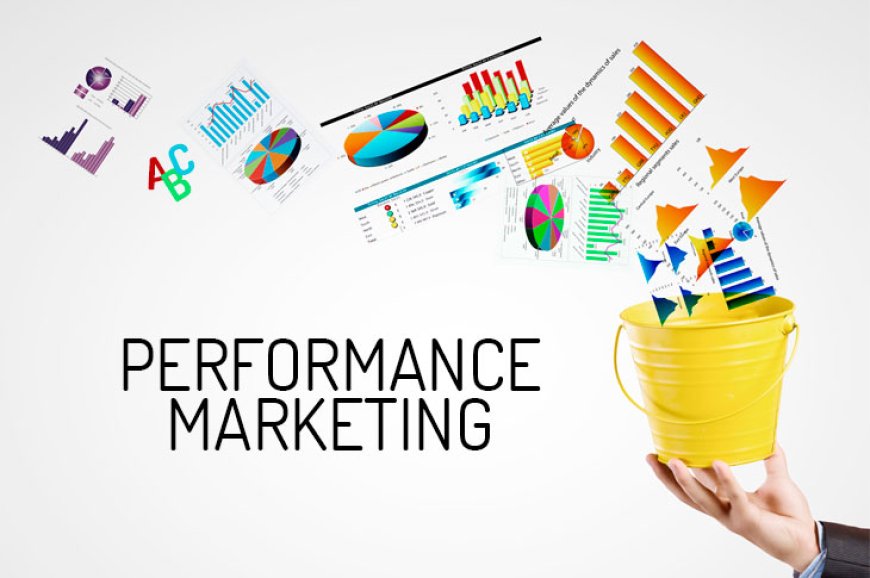Performance Marketing Strategy: A Comprehensive Approach for Targeted Success

I. Introduction
Performance marketing has transformed how businesses approach digital strategy, emphasizing measurable results and return on investment. Unlike traditional marketing, where expenses are often not directly linked to specific results, performance marketing allows companies to pay only for successful transactions or actions. This guide will explore the strategic depth of performance marketing, shedding light on its benefits, techniques, and integration into broader business objectives.
II. Understanding Performance Marketing
A. Key Components
At its core, performance marketing involves several critical elements: affiliates, networks, publishers, and advertising platforms. Each component plays a role in facilitating the marketing process, from the initiation of user engagement to the final conversion. This model thrives on its ability to leverage digital channels for direct, measurable impact, allowing marketers to track the effectiveness of each campaign in real-time.
B. How It Differs from Traditional Marketing
The primary distinction between performance marketing and traditional marketing lies in its accountability and efficiency. Traditional marketing expenditures often occur upfront, without guaranteed results, covering broad campaigns via print, television, and radio. In contrast, performance marketing focuses explicitly on targeted outcomes, such as leads, sales, or specific customer actions, making it a more cost-effective method that aligns directly with sales objectives.
III. Developing a Performance Marketing Strategy
A. Goal Setting
Effective performance marketing starts with clear, quantifiable goals. These might include increasing website traffic, generating leads, or boosting sales within a specific timeframe. By setting SMART (Specific, Measurable, Achievable, Relevant, Time-bound) goals, businesses can create focused campaigns that directly contribute to their strategic objectives.
B. Audience Analysis
Understanding your target audience is crucial in crafting a performance marketing strategy that resonates and converts. This involves analyzing demographic data, online behavior, purchasing patterns, and preferences. Tools like Google Analytics and social media insights provide a wealth of information that can help tailor campaigns to the specific needs and habits of potential customers.
C. Choosing the Right Channels
The selection of appropriate channels is vital for reaching the intended audience effectively. This might include digital platforms such as social media, search engines, email, and affiliate networks. Each channel has strengths and weaknesses depending on the campaign goals, target audience, and content type, making channel selection a critical strategic decision.
IV. Key Tactics in Performance Marketing
A. Affiliate Marketing
Affiliate marketing is a cornerstone of performance marketing, where affiliates are rewarded for bringing in leads or sales. The success of this tactic depends on the strength of partnerships and the alignment of affiliate incentives with product offerings.
B. Influencer Marketing
Influencer marketing leverages the credibility and reach of influencers to promote products in more personal and direct ways. Choosing the right influencer whose audience aligns with the target market is crucial for the success of these campaigns.
C. SEO and Content Marketing
SEO optimizes the technical configuration and content relevance of a website so that pages appear at the top of search engine results for specific keywords. Content marketing supports SEO efforts by creating valuable, engaging content designed to meet the needs of users and prompt them to take action.
D. PPC Advertising
Pay-per-click advertising is a fast way to drive traffic where advertisers pay each time their ad is clicked. The key is to develop compelling ad copy and optimize landing pages to convert this traffic into leads or sales.
E. Email Marketing
Email marketing involves sending targeted and personalized messages to a list of email subscribers to educate and convince them to perform a specific action, like making a purchase. This tactic combines well with other digital marketing strategies by nurturing leads through personalized content.
F. Social Media Marketing
This involves promoting content and interacting with users on social media platforms. Effective social media marketing must be engaging, timely, and responsive to foster community and promote user interaction with the brand.
V. Advanced Tools and Technologies
A. Analytics and Reporting Tools
Advanced analytics tools like Google Analytics, Adobe Analytics, and specialized performance marketing software can track the effectiveness of campaigns across various channels. These tools help refine strategies by providing insights into user behavior, campaign performance, and ROI.
B. Automation Tools
Marketing automation tools can help in managing repetitive tasks such as email marketing, social media posting, and even some aspects of ad campaigns. These tools ensure that marketers can focus on strategy and creative tasks that require more attention.
C. AI and Machine Learning
Artificial intelligence and machine learning are increasingly being integrated into performance marketing to predict user behavior, automate bid management for ads, and personalize content at scale. These technologies are becoming indispensable in processing the large volumes of data generated by digital campaigns and in making real-time decisions that enhance campaign performance.
VI. Integrating Performance Marketing into Broader Marketing Goals
A holistic approach that integrates performance marketing into the broader marketing and business strategy ensures consistency across all campaigns and maximizes the impact of each marketing effort. This integration helps align team goals, leverages synergies across various marketing activities, and ensures a unified brand message and customer experience.
VII. Measuring Success in Performance Marketing
A. Key Performance Indicators (KPIs)
Successful performance marketing campaigns rely on well-defined KPIs such as click-through rates (CTRs), conversion rates, cost per acquisition (CPA), and customer lifetime value (CLV). These indicators help marketers gauge the effectiveness of campaigns and adjust strategies to optimize performance.
B. Continuous Improvement and Optimization
The digital marketing landscape is continuously evolving, necessitating ongoing adjustments to performance marketing strategies. Regular testing, coupled with analytics, allows marketers to experiment with new tactics and technologies, ensuring that strategies remain effective and competitive.
VIII. Challenges in Performance Marketing
Despite its many benefits, performance marketing faces challenges such as ad fraud, privacy concerns, and the increasing complexity of digital ecosystems. Marketers need to stay informed about the latest regulatory changes, invest in fraud prevention technologies, and adopt privacy-first advertising practices to mitigate these issues.
IX. Future Trends in Performance Marketing
The future of performance marketing lies in further integration of AI and machine learning, the growing importance of data privacy, and the continuous adaptation to changing consumer behaviors. Marketers must keep pace with these trends to remain effective and competitive in the evolving digital landscape.
X. Conclusion
Performance marketing is a dynamic and essential component of modern digital marketing strategies. By focusing on measurable results, leveraging advanced technologies, and continuously optimizing campaigns, businesses can achieve significant growth and maintain a competitive edge in their industries.
XI. FAQs
-
What is the first step in creating a performance marketing strategy?
- The first step is clearly defining your business goals and objectives, as these will guide your choice of tactics and channels.
-
How do I choose the right KPIs for my performance marketing campaigns?
- Choose KPIs that directly reflect your campaign goals, such as conversion rate for sales-focused campaigns or engagement rate for branding campaigns.
-
What are the best practices for minimizing ad fraud in performance marketing?
- Use sophisticated ad verification tools, invest in fraud detection software, and choose reputable partners and platforms.
-
How can small businesses benefit from performance marketing?
- Small businesses can benefit significantly from performance marketing due to its cost-effectiveness and scalability. Start with small, targeted campaigns and scale up based on performance.
-
Can performance marketing be integrated with offline marketing strategies?
- Yes, performance marketing can be integrated with offline strategies through tactics like QR codes on print ads, tracking phone calls from specific campaigns, and using online data to inform offline decisions.
What's Your Reaction?
 Like
0
Like
0
 Dislike
0
Dislike
0
 Love
0
Love
0
 Funny
0
Funny
0
 Angry
0
Angry
0
 Sad
0
Sad
0
 Wow
0
Wow
0



















































